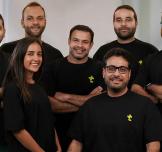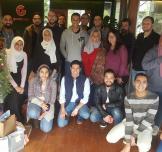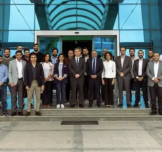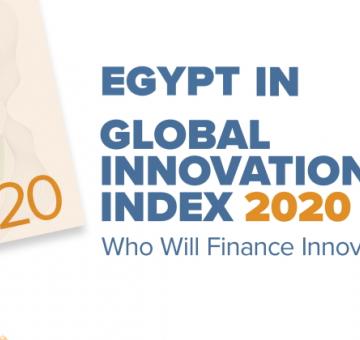Step Out of Your Sand Box Part 2

Photo credits contestwatchers
So often we observe staff in Egyptian businesses engaged in the pursuit of new ideas to help expand their companies. Unfortunately, the quality and scope of these ideas are usually limited and the traditional way of thinking usually leads to biased results. This is because employees are trapped in their sandbox. This bias itself needs to be shattered.
A well-tested tool in the Egyptian market that breaks that bias in thinking is the Business Opportunity Map (BOM); an effective tool that companies can use to identify new fields of play, and eventually build complete business concepts.
The BOM organizes information into a simple understandable format, incorporates market and capability perspectives, provides structure to brainstorming sessions and functions as a visual communication tool for discussing new business opportunity areas.
To appreciate the power of the BOM, we need to understand where innovation comes from. Let’s take a closer look at innovation dimensions.
Market – Idea fragments generated under this dimension revolve around:
Underserved segments, mega global forces and emerging trends (e.g., social, technological, political, economical, environmental).
Had paper-based publishers seen the trend shifting to electronic content and online news early on, they would have capitalized on the trend, built online portals, partnered with consumer electronics manufacturers and adopted a digital marketing strategy to capture online and mobile users.
Human needs: Human needs and how they change are an important aspect of innovation. That goes back from creating a customer portrait to identifying why a customer behaves in a certain way.
Positioning: Seeing where a company stands from a different angle and adopting a new outlook. Egypt’s Giza Systems has repositioned itself from an IT solutions provider to a full-fledge integrator that services new untapped verticals. Consequently, Giza Systems’ slogan today is ‘We integrate’.
Delivery –Creative delivery channels need to be thought of throughout the whole buyer experience cycle, not just the end-of- product or service delivery.
This starts with raising awareness about the company’s products and services, helping customers evaluate the company’s value proposition, what are the logistics around delivering the offering, and finally provide post-purchase customer support.
A final point to consider while generating the idea fragments is how to also capitalize on certain seasonal occasions (e.g., Ramadan, Back to School) by introducing targeted products and services.
Offering – Idea fragments related to these dimensions include: What experiences does the core offering involve? Is it a product, service or hybrid? How is it branded? What complementary products and services should be introduced to accelerate the adoption of the core offering? How can I fast-track the learning curve of new offerings? Finally, how can I expand the network externalities of the offering in order to make it more difficult for a customer to switch to competition?
One reason why the number of Apple and Android smartphone users skyrocketed was because application developers became more likely to spend their efforts on designing applications (complementary products) for both platforms rather than, for example, Microsoft or Blackberry.
Companies must consider such strategies, and understand that making its product dominant in the marketplace is not only about its standalone value, but also the network of complementary offerings around it.
Production – Idea fragments addressed under this dimension include: What technologies do we use to create the offering? What processes do we have to create for the offering? What packaging is needed to make the offering attractive and reliable? What assets and resources do we use to create the offering?
For example, Egypt-based logistics company, Mashaweer, has its business concept anchored around efficient hub-based delivery services while offering a service that no other business does. On the other hand, PICO agriculture innovated in their packaging to better suit the needs of countries they export to. Both examples are production-anchored innovations.
Business Model – Having a simple and proven business model is key. Simple models win hearts and minds of people. Idea fragments addressed under this dimension touch on ways to leverage the power of crowd-sourcing to engage customers and learn from them, building new communities around a brand, creating refillable models with higher profit margins beyond the core offering, defining new revenue streams and partnering opportunities throughout the product’s supply chain.
An example of supply chain collaboration can be seen when Mercedes-Benz offered test drives to potential customers in the Smart Village targeting its A-class client segment.
A good example of crowdsourcing can be seen where the Egyptian snacks company, Chipsy, was successful in building a community around its brand and sourced ideas from its consumers about its future flavors.
On the other hand, companies need to appreciate that traditional partnerships rely on filling the gaps that answer the question: what’s necessary? However, the breakthrough approach answers the question: what’s possible?
Across the supply chain, companies should develop ideas around questions such as: Can we partner on the front-end to make something more profitable? Can we partner in the middle to get better feedback from customers? Can we partner in the back-end to get to market faster?
In conclusion, “Innovate or die,” as the old business cliché says.
Egyptian businesses are new to innovation but are slowly understanding the need to innovate, and that innovation is something that they cannot afford to ignore anymore particularly in a globalized and fast-changing world.





























































EgyptInnovate site is not responsible for the content of the comments